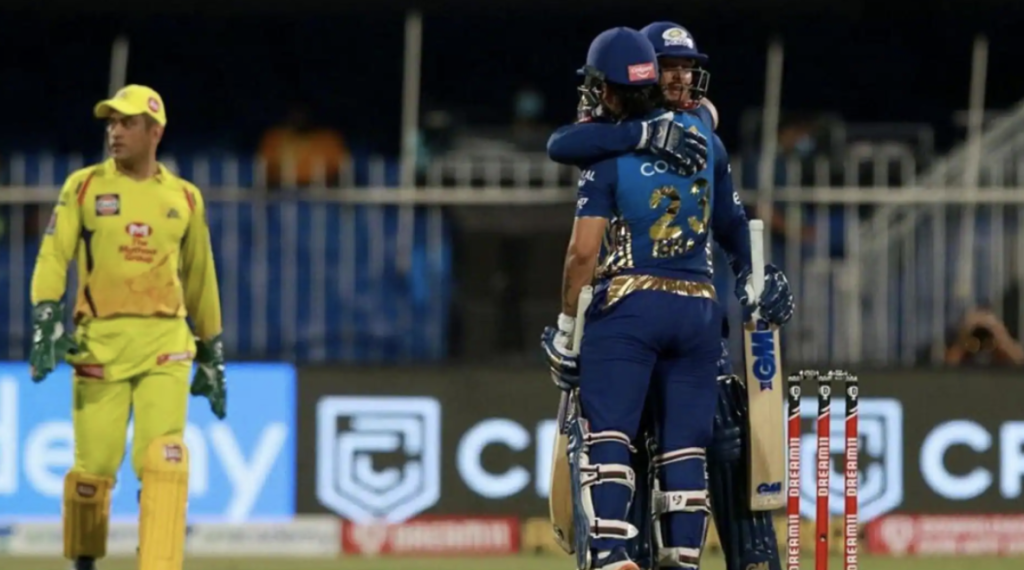Cricket was once a heartbeat sport—bursts of national fervor around ICC events, then long spells of regional silence. Today the game beats like a humming turbine, powering economies, algorithms, and fan communities every month of the year.
During aviator bet, commentators joked that the sport would never sell out January-through-December; yet in less than a decade India’s IPL, the Women’s Premier League (WPL), and the United States’ fledgling Major League Cricket (MLC) have merged into a continuous carnival, turning old scheduling logic upside down and spawning a billion-dollar franchise marketplace.
Table of Contents
From Short Season to 12-Month Economy

Until 2008, most cricketers broke for the winter unless their national boards arranged a tour. Domestic championships struggled for broadcast windows, and sponsorship money gravitated toward quadrennial World Cups. The advent of the Indian Premier League cracked that mold: a six-week T20 blaze with Bollywood razzmatazz showed that condensed entertainment could out-earn five-day Tests.
Fifteen seasons later, IPL media rights trade on par with the NFL and English Premier League. In parallel, smaller tournaments leapfrog across the calendar—Big Bash in December, SA20 in January, PSL in February, IPL in April-May, The Hundred in July-August, CPL in September, MLC in July. Cricket now functions like a rotating carnival where players, analysts, and fans hop from venue to venue, app to app, seldom facing an off-season. Sponsors relish the never-dark stadium lights; broadcasters package “365-day cricket” bundles to advertisers hungry for stickier audiences than mainstream TV can promise.
IPL: Blueprint of the Billion-Dollar League
Media Money and Valuations
The IPL’s 2023-27 broadcast and digital rights sold for US $6.2 billion. Per-match value eclipses that of the NBA Finals. Each of the ten franchises carries a valuation north of US $1 billion; the Mumbai Indians top charts at an estimated US $1.9 billion. Equity funds sniffing for growth outside tech stash capital in team stakes, betting on media rights inflation and global streaming penetration.
Talent Auctions and Salary Gravity
When the IPL auction hammer falls, it resets salary ceilings across formats. In 2024 the Punjab Kings snapped up Australia’s Mitchell Starc for a record US $3.3 million—more than his central contract with Cricket Australia. That figure ricochets through dressing rooms worldwide: emerging stars weigh national duty against franchise riches, prompting boards to renegotiate retainers or lose marquee talent to the open market.
Data, Tech, and Viewer Immersion
Hawk-Eye ball-tracking, Spidercam aerials, and 4K slow motion used to be novelties; IPL audiences now expect augmented-reality strike-zones and on-screen predictive win-probabilities updated each delivery. Fantasy-sports integrations allow fans to draft micro-teams mid-innings and trade in real time. Algorithms crunch every ball bowled since 2008, generating the numbers that pundits serve between overs. As tech stacks evolve, the league becomes a template other tournaments license rather than replicate from scratch.
Women’s Premier League: Disrupting Old Norms, Doubling the Market
Breaking Ground on Pay Equity
The WPL launched in 2023 with a collective franchise fee pool of US $572 million—dwarfing the men’s IPL’s 2008 launch figure. Mumbai franchise owners paid Indian opener Smriti Mandhana over US $400 000, instantly making her one of India’s highest-earning female athletes. Youngsters in Pune academies can now point to a viable professional pathway that barely existed a few years ago.
Audience Composition and Brand Sentiment
Data from the first two WPL seasons show a 42 percent female viewership slice during prime-time matches—a demographic advertisers court but rarely secure through men’s sport alone. Lifestyle, fitness, and F&B brands anchor campaigns on WPL role models, reframing cricket from a male bastion to a shared family ritual. Social-media chatter reveals that male fans, too, appreciate the technical purity and condensed run-rates on display, which challenge clichés of women’s cricket being slower or less fierce.
Talent Pipelines and Grassroots
State associations now funnel a share of WPL license fees into girl’s academies, U-15 leagues, and sports-science programs tailored to female physiology. Results are tangible: seamers touching 130 kph, wrist-spinners flighting with Shane Warne-esque guile, and power-hitters clearing 70-metre boundaries. International boards—England, Australia, South Africa—re-jig national schedules to free their stars for WPL stints, acknowledging the league’s role in sharpening global standards.
Major League Cricket: America’s Bold Entry
The Market Rationale
The United States hosts 4.5 million South-Asian and Caribbean immigrants who follow cricket on streaming apps at odd hours. MLC positions itself as the on-shore alternative, staging games in prime-time evenings under baseball-style lights. Investors, including Microsoft CEO Satya Nadella and Bollywood superstar Shah Rukh Khan, expect dual dividends: direct revenue from gate and media rights, and indirect value from converting a latent fan base into mainstream U.S. sports consumers.
Venue Innovation
Texas’ Grand Prairie Stadium—once a minor-league baseball park—has been repurposed into a cricket-specific venue with drop-in pitches flown from Florida. Configured sightlines mimic Australian grounds rather than rectangular baseball diamonds, enhancing shot visibility and spin perception. Pop-up digital screens track ball trajectories like MLB’s Statcast, bridging familiarity for local spectators who may recognize curve-ball graphics but not doosra diagrams.
Player Liberation and Global Calendars
MLC’s July window slots neatly between IPL wind-down and Caribbean Premier League kick-off. International players pick up short-term contracts without clashing with national duty—handy for English County regulars or Australian Big Bash stars. Franchise owners pitch MLC as the ideal mid-summer gig: top-up earnings, tour U.S. cities, and capture a nascent market before it matures.
Broadcast Rights and Streaming Wars
The OTT Gold Rush
Cricket once relied on satellite TV tranches; now over-the-top (OTT) platforms wage price wars for exclusive streams. Viacom18 shells out billions to secure digital exclusivity on IPL; Disney+ Hotstar responds with celebrity-studded studio shows for WPL; Willow TV packages MLC for U.S. niche audiences but syndicates highlight reels on YouTube to bait casual browsers. Subscription bundles add fantasy-sport points, merchandise discounts, and NFT drops, making cancellation harder for fans.
Deep Personalization
AI engines purr under dashboards, learning whether a viewer tunes in for Virat Kohli centuries or boundary-side celebrity shots. Within seconds, UI overlays pivot to player-mic audio, multi-cam drone feeds, or in-game shop buttons. Sponsors love dynamic ad insertions that serve energy-drink promos to 18-to-24 men during slog overs but swap to skincare for morning reruns watched by female fans.
Global Regulation and Regional Firewalls
As media rights balloon, regulators scrutinize competition and data privacy. India’s Telecom Regulatory Authority debates whether exclusive sports streaming undermines public access. The EU eyes cross-border digital sales that bypass local tax regimes. Rights holders juggle geo-blocking rules and VPN workarounds while anti-piracy bots crawl Telegram channels in near real time, filing takedown requests before illegal streams go viral.
Player Workload, Contracts, and Talent Migration
The Nomadic Professional
Top cricketers juggle national duty, two or three franchise leagues, endorsement shoots, and content creator deals. GPS vests show spikes in fast bowler workloads: a three-league season can exceed 1 200 deliveries at match intensity, nudging injury risk curves upward. Clubs negotiate rest days; national boards impose mandatory windows to protect elite players for ICC events. Yet the money gap widens: a mid-tier Indian domestic player can earn 10x his Ranji salary from one IPL contract, blurring loyalty lines.
Freelance Central Contracts
West Indies pioneered “white-ball specialists” who skip Tests to roam T20 leagues. England now offers “hybrid retainers” letting players sign short-term overseas stints outside international windows. Some boards introduce sabbatical clauses—take six months abroad, return refreshed. Others cling to exclusivity, risking defections. The concept of club vs. country morphs into a marketplace negotiation rather than binary allegiance.
Talent Drain vs. Talent Bloom
Critics lament that smaller nations lose stars to global leagues, weakening Test rosters. Optimists counter that cash-rich leagues fund domestic academies, raise coaching standards, and inspire new participation. Sri Lanka’s Wanindu Hasaranga hones his leg-spin arsenal in the IPL, then torments batsmen back home in Tests. India’s uncapped wonders—from Tilak Varma to Rinku Singh—debut under stadium floodlights watched by 200 million, speeding maturation.
Sponsors, Brands, and the Expanding Commercial Web
Old-School Biggies and Startup Disruptors
Legacy sponsors—cement, banks, telecoms—share hoarding space with crypto exchanges, fantasy-sports apps, and plant-based protein brands. A single IPL match flashes upwards of 130 ad spots, each micro-targeted via programmatic insertion. Logos migrate from boundary ropes to LED stumps, player holograms, and even drone-delivered t-shirt drops during timeouts.
Merchandising and Licensing
Franchise jerseys sell year-round, refreshed each season with local art motifs or sustainability fabrics. NFTs function as digital rookie cards; rare animated wickets fetch thousands on resale marketplaces. Clubs partner with fashion labels for limited-edition streetwear—Delhi Capitals hoodies in neon cyber-punk fonts appeal to Gen Z who may never visit Feroz Shah Kotla but rock the look on TikTok.
Cause Marketing and ESG
Brands know fans punish green-washing. Franchises offset stadium emissions with mangrove replanting, feature solar roofs, and run plastic-free concession zones. WPL sides raise gender-equality flags; MLC sponsors donate grass-roots kits to U.S. public schools. Purpose becomes PR becomes long-term equity.
International Calendar and Governance Shake-ups
ICC Windows Under Siege
The ICC traditionally carves out protected slots for World Cups and Champions Trophies. Franchises now lobby for those windows to shorten, citing media momentum. Boards propose multi-year “league embargo” weeks to preserve bilateral tours. Consensus proves elusive: BCCI wields economic clout, smaller nations fear revenue gaps, while fans crave both national rivalries and club fireworks.
Revenue Sharing and Broadcast Power
ICC revenue splits once favoured Test-playing boards; franchise leagues rewrite that math. A mid-table IPL team can net more than Zimbabwe Cricket’s annual grant. Some analysts float a “club world cup” generating central funds to redistribute among developing nations. The idea lingers in boardrooms even as Test purists lobby for five-day sanctuaries.
Format Evolution
T10 leagues, indoor cricket circuits, and 100-ball formats hover on the periphery. Purists deride gimmicks, yet broadcasters crave novelty. Rule tweaks—impact player substitutions, timed-out dismissals—trial in the IPL then ripple into ICC laws. Cricket’s openness to iteration keeps the product fresh but risks confusion for casual viewers.
Fan Experience: Stadiums, Second Screens, and the Metaverse
In-Venue Upgrades
Smart stadia deploy RFID wristbands for cashless snacks, AR overlays showing fielder heatmaps on personal screens, and 5G beacons streaming multicam angles to phones. Sound engineers sync crowd roars with LED walls for coordinated “waves” that pulse in rainbow gradients—Instagram catnip.
Fantasy, Betting, and Micro-Engagements
Legal fantasy-sports platforms drive double-screen consumption: 68 percent of IPL viewers track fantasy points live. Predict-the-next-ball contests keep engagement spiking every 30 seconds; sponsors pay for that stickiness. Regulators monitor gambling grey zones, though India still bans real-money betting in most states. Overseas markets monetize micro-bets—dot ball, boundary, dismissal—introducing fresh revenue but raising match-integrity safeguards.
Into the Metaverse
IPL franchises test virtual stadium twins where fans’ avatars high-five star batters in locker-room meet-and-greets. Digital collectibles—trophy rooms, signed bats—trade via blockchain. While user numbers remain niche, the tech offers global supporters immersive proximity, particularly important for MLC where local fandom is still embryonic.
Future Scenarios and Challenges Ahead
Saturation or Synergy?
With over a dozen top-tier T20 tournaments worldwide, calendar overlaps loom. Some pundits predict consolidation: four mega-leagues allied to global broadcast partners, swallowing regional minnows. Others envisage a tiered ecosystem like football, where promotion-relegation spurs talent mobility and narrative arcs. Central to all forecasts: player health, equitable revenue sharing, and coherent fan messaging.
Governing Integrity
As money peaks, so does temptation—spot-fixing scandals, insider trading on auction data, and illegal stream cartels. Technology counters with AI fraud detection, blockchain ticketing, and biometric access for team zones. Regulatory bodies expand anti-corruption units and embed integrity officers inside dressing rooms.
Climate and Sustainability
Summer tournaments face extreme heat indexes; evening start times creep later, affecting broadcast schedules in Europe. Stadium designers integrate mist cannons, shaded seating, and water-neutral pitch care. Leagues weigh carbon-offset costs against charter-plane convenience, trending towards regional clusters to cut travel miles.
Cricket’s year-round marketplace stands at a fluid inflection: the IPL remains its gravitational core, the WPL doubles inclusive opportunities, and MLC opens a lucrative American flank. Together they redraw not just the calendar but the sport’s very definition—from a seasonal pastime to a perma-streamed entertainment engine syncing athletes, fans, tech, and brands in a global rhythm that rarely skips a beat.
















